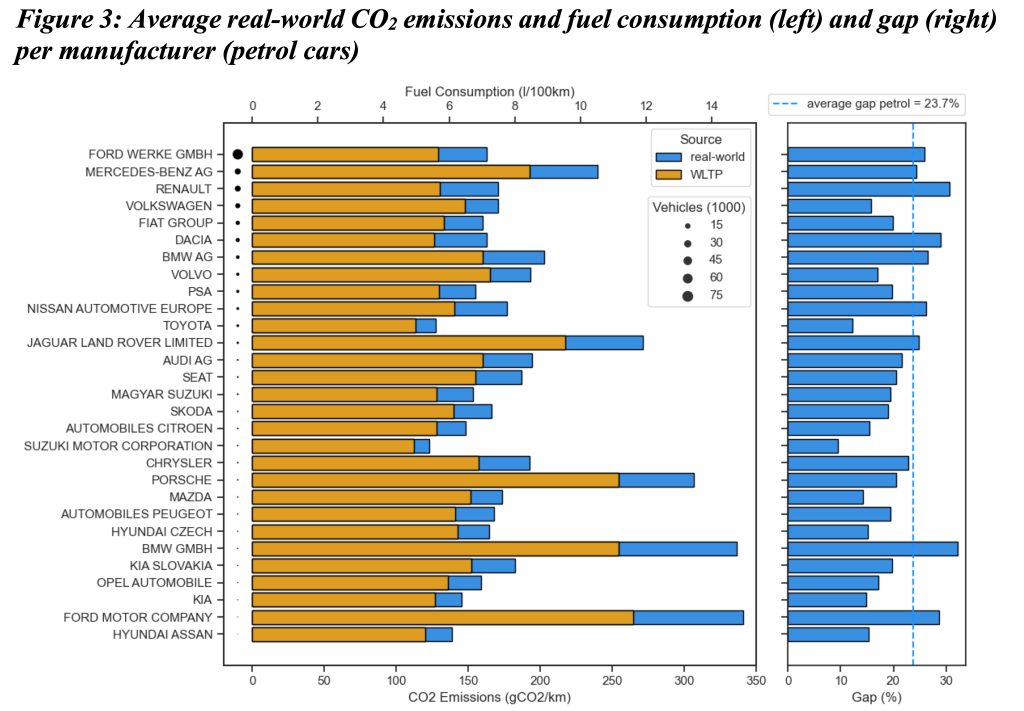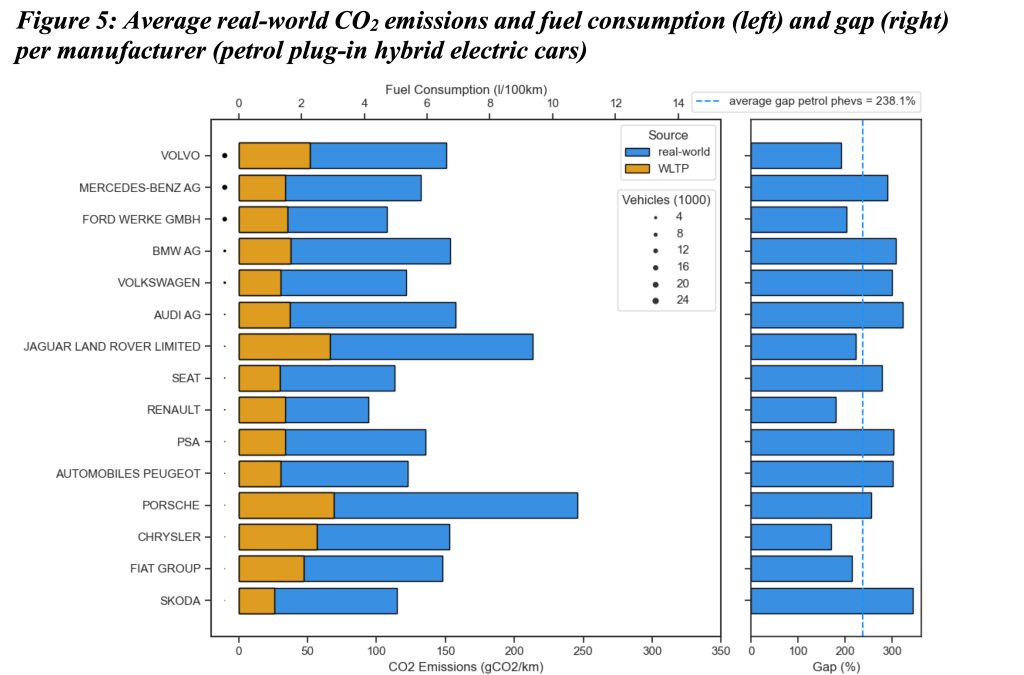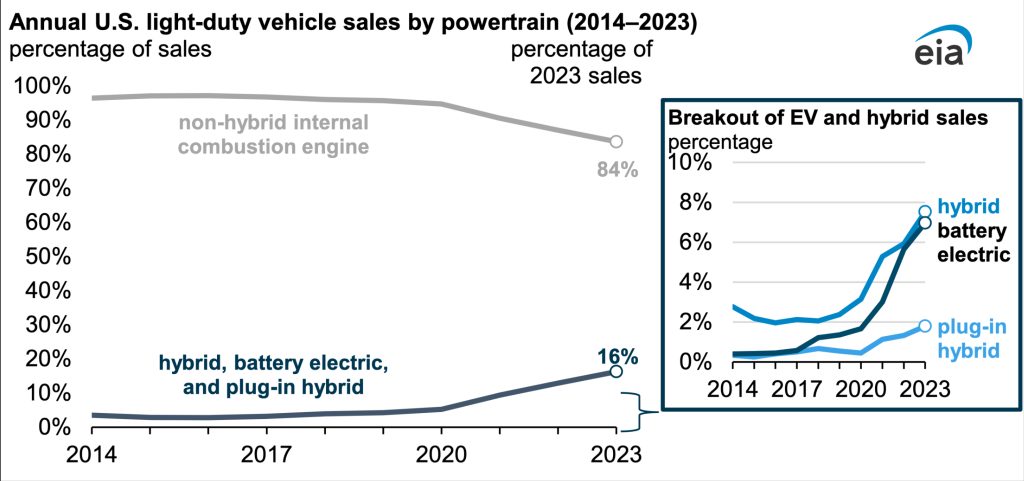
A new report by the European Commission adds yet another real-world data point showing that plug-in hybrid electric vehicles create much more emissions than we previously thought – by an average of 3.5 times as much as lab testing indicates.
Plug-in hybrids (PHEVs) are thought to bring the best of both worlds – a large enough battery to take care of your daily tasks, paired with a gas engine for longer trips or when you can’t find a charger. There are downsides in cost and complexity, but the powertrain choice does provide more options than others.
For this reason, PHEVs have long been thought of as an ideal transitional technology between gas vehicles and electric ones. People would be able to do most of their driving on electricity and only occasionally use gas.
The problem is… that doesn’t happen.
Multiple recent studies have shown that in the real world, plug-in hybrids pollute much more than their labels would indicate – though still less than pure-fossil vehicles – both because they overstate their capabilities in electric-only mode and because people simply don’t plug them in.

The latter is referred to as “utility factor” – the percentage of time that a PHEV gets used on electric drive rather than its combustion engine. In reality, PHEV utility factors are much lower than emissions testing credits them for, which means that in practice, PHEV emissions are much higher because they use the combustion engine more often than expected.
Previous studies were done in Europe by T&E and TU Graz (T&E has done multiple studies on this) and by the ICCT utilizing data from California. In each case, PHEV emissions and fuel use were much higher than expected, though it differs for various regions and car models. Models with larger batteries – “EV-first” designs – tended to have higher utility factors and lower emissions.
However, this report is important because it was done by a government entity, rather than by NGOs.
The new EU Commission report shows “emissions gaps” – that is, the difference between expected and real-world emissions for PHEVs – that are very high in all examined countries in Europe. Gaps fell between 176% (Finland), up to 287% (Poland).
The “emissions gap” differs from country to country due to patterns in vehicle use. For example, Germany tends to have lower utility factors, and thus a high emissions gap of 284%, because PHEVs are often leased as company cars, giving companies significant benefits, and then driven like gas cars and never plugged in. But the numbers are high regardless of country.
An emissions gap also exists for petrol- and diesel-fueled vehicles, with each of them also emitting more than WLTP numbers would indicate – and therefore getting lower mileage, and having higher fuel costs, than consumers would expect by looking at the label. But those emit about ~20% more, whereas PHEVs emit on average over 200% more.


This data is particularly relevant given recent discussions about regulatory requirements for vehicles. Regulators have softened some targets, in many cases giving PHEVs additional credit for emissions reductions that data shows us are underwhelming.
For example, California’s 2035 phaseout for gas vehicles still allows 20% of cars to be PHEVs – which we now have additional evidence will emit much more than expected. Though those rules do have certain minimum requirements for PHEVs (which nevertheless could perhaps use updating to reflect real-world findings).
Also, the EPA’s new rules, finalized last week, offered multiple pathways for manufacturers to comply, one of which relies heavily on PHEVs. But it also explicitly acknowledged that current utility factor estimates are too high and need to be revised downwards, but pushed back implementation of the new utility factors to 2031 instead of 2027 – allowing PHEVs to continue to pollute for years further.
The Commission’s report will be used in future EU regulations to inform utility factors in official test procedures. A rule change is already in the plans for 2025, but the report says that the rules might need to “further adjusted” given the real-world data within it.
Electrek’s Take
We’ve long thought that PHEVs are only good if they actually get used, and in order to do that, you need to design PHEVs to be used on battery charge only.
There are a few good PHEVs that fit this description, like the Chevy Volt and BMW i3, and these models tend to have much higher utility factors than other models do. But cars which, for example, kick you out of EV mode as soon as you hit the accelerator, aren’t particularly useful in terms of avoiding fossil fuel use.
And now here we have data to confirm, once again, that PHEVs are not as clean as some – like Toyota, for example – might have you think.
I certainly know people who have had less-serious PHEVs and never or rarely plugged them in – like a friend who had an early Plug-in Prius that he didn’t even bother to plug into 120V because of its minuscule battery, and because his car’s electricity use wouldn’t be enough to make it worthwhile to install a charger and set up time-of-use charging for discounted electricity as his house.
Fortunately (?), PHEVs have also historically had the least consumer uptake, so there aren’t that many cars currently affected by this undercounting of emissions. But it is still important that we arrange regulations around this new knowledge of real-world emissions.

While EV and conventional fossil-fueled hybrid sales are both rising rapidly, PHEV sales have had significantly more modest sales growth. Part of the reason for this is likely because people who aren’t interested in plugging in will just buy a conventional hybrid, and people who are interested in plugging in would prefer the simplicity of full electric drive.
There are solutions going forward, though. As suggested in the previous T&E and ICCT studies, PHEVs should be designed with an electric-first mentality, with large enough batteries to be practical for everyday use, and regulatory schemes should use these real-world values and be centered around ensuring these vehicles be used on electric power instead of being given tax breaks for just driving around on gas. Regulators should change their schemes to take this knowledge into account – and they should do it now, not in 2031.
Author: Jameson Dow
Source: Electrek






Top comment by Phil
Liked by 14 people
We got a Pacifica PHEV for my wife due to the lack of EV minivan options. I’ve been surprised at how often the combustion engine runs even with plenty of charge left on the battery. I’m not talking about high-speed, wide-open-throttle driving either. For example, the last time I took it out, about a half mile into my trip the ICE fired up while I was driving 25 MPH with 97% battery while it was 45F outside and stayed running for about a mile.
I had envisioned being able to do nearly all of our in-town driving in electric only mode and am disappointed that hasn’t been the case.
View all comments